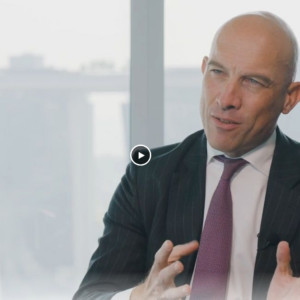
As we enter 2023 and beyond, what will you remember about 2022 and the investment decisions you made in the wake of very challenging markets?
Throughout the year, I have spoken to investors who shelved their steady stock and bond investment mix in the face of poor performance they would love to forget. Others left holdings relatively unchanged and plan to tackle year-end portfolio rebalancing.
Remember that unlike 2019, 2020, and 2021, when the S&P 500 index rewarded investors with respective returns of 31.4 per cent, 18.4 per cent and 28.7 per cent, this year presented a perfect storm of events that prompted many investors to seek shelter away from markets entirely. In the face of 2022’s onslaught of curve balls, rampant inflation, rising interest rates, horrific natural disasters, the persistent threat of Covid-19 and Russia’s ongoing invasion of Ukraine, market news was nearly impossible to ignore, even while you focused on those new pandemic hobbies.
Playing Harry’s game
For many years, institutions and individuals have come to rely upon a long-term portfolio mix that has served them well. Developed by Nobel Laureate Harry Markowitz in 1952 and comprised of 60 per cent stocks and 40 per cent bonds, the stalwart portfolio for many years has generated attractive investment returns by assuming low levels of risk.
In fact, from 1980 through July 2022, the 60/40 portfolio delivered positive returns in 35 of 42 years. That means investors who have relied upon this investment mix have seen their portfolios increase in value 83 per cent of the time.
As any statistician will tell you, the long-term performance of the 60/40 portfolio is “statistically significant” and not the result of chance or luck. With an average annual rate of return of 9.89 per cent for the 30 years ending in 2021, 60/40 investors have been rewarded for staying the course. But this year the strategy has performed poorly and is down more than 19 per cent through the end of the third quarter.
Despite the 60/40 portfolio’s positive long-term returns, this year’s crummy performance has prompted investment experts to point investors to alternatives like private equity, infrastructure, long/short strategies and real estate. In addition to reaching for asset types that are inaccessible to all investors, alternative managers also employ investment techniques such as using leverage or hedging that have the potential — if successful — to amplify gains.
But if not, good luck dodging the losses. While alternatives absolutely serve a purpose in diversified investment portfolios, they are not necessarily the best investment for everyday investors, for three key reasons.
Alright for some
Firstly, alternatives are often more appropriate for large, institutional-type investment portfolios. While a small allocation to alternatives may make sense for typical investors, allocating a significant percentage of a portfolio to non-traditional investments makes sense only for investors whose portfolios are valued at $1m or more. Often, these investors are looking for negatively correlated investments that do not rise and fall in tandem with stocks, or those that may provide alternative streams of income. During years like 2022, when both the stock and bond markets turned negative, alternative investment positions have the potential to temper investment volatility.
Secondly, alternatives possess characteristics that everyday investors dislike. For many years, individual investors have grown to appreciate the transparency, regulatory oversight, liquidity, and manageable fees that characterise traditional investments. The same cannot be said for alternatives. In many cases, they are complex, unregulated, illiquid and costly in terms of fees.
And finally, portfolios benefit from alternatives when they are added in anticipation of market downturns. Instead of adding alternative investments during market downturns, investors should add them to their portfolios when traditional investments are performing well, and alternatives are out of favour.
I know many investors would rather forget a down year like 2022, but the climb up and to the right sometimes takes a detour. Instead of channeling frustration into making significant investment portfolio changes during a bear market, I recommend investors reframe their objectives for the long-term. Muster ample short-term patience and you too can achieve your financial goals.
Jan Blakeley Holman is the director of adviser education at Santa Fe, New Mexico-based Thornburg Investment Management



